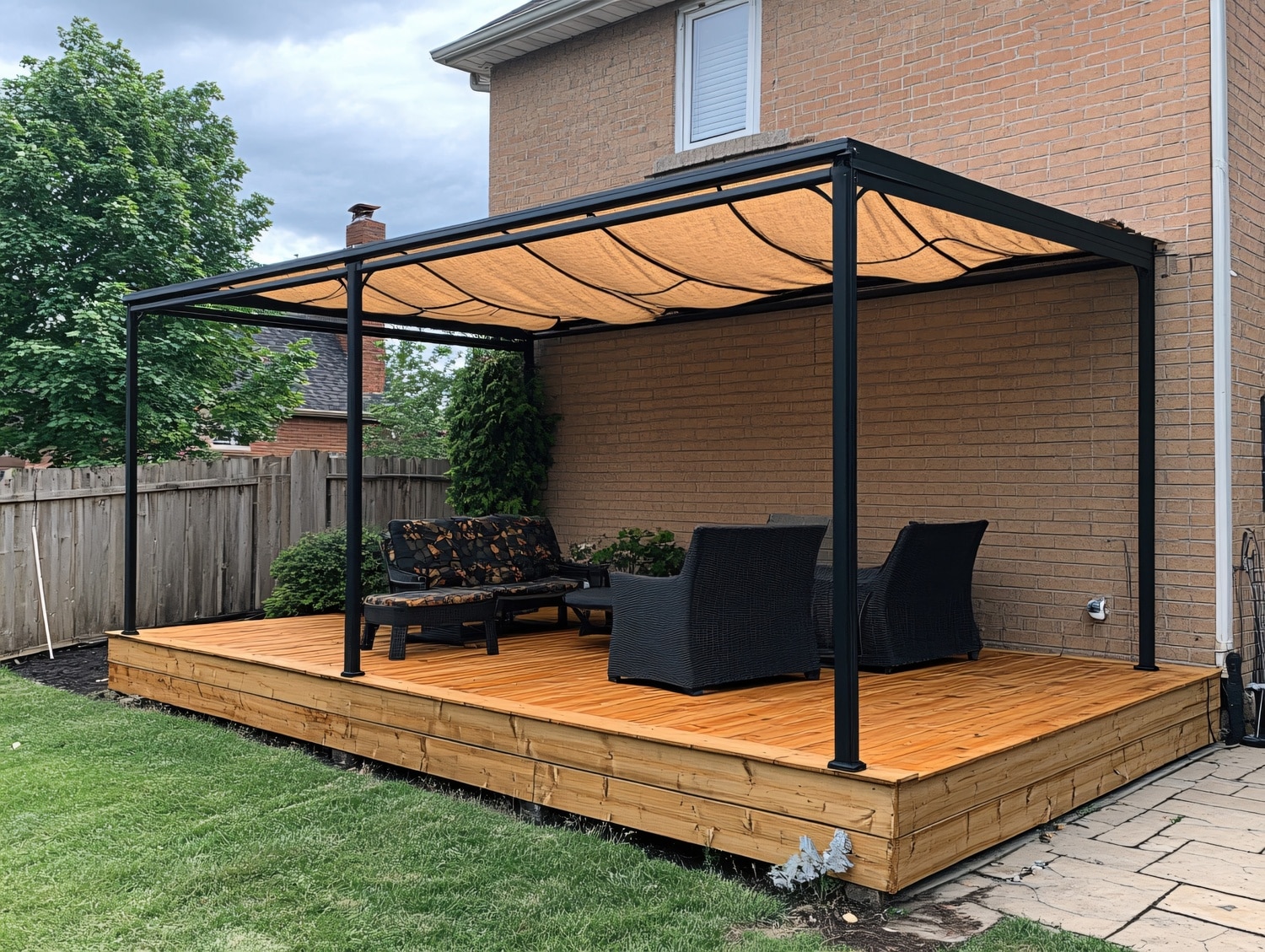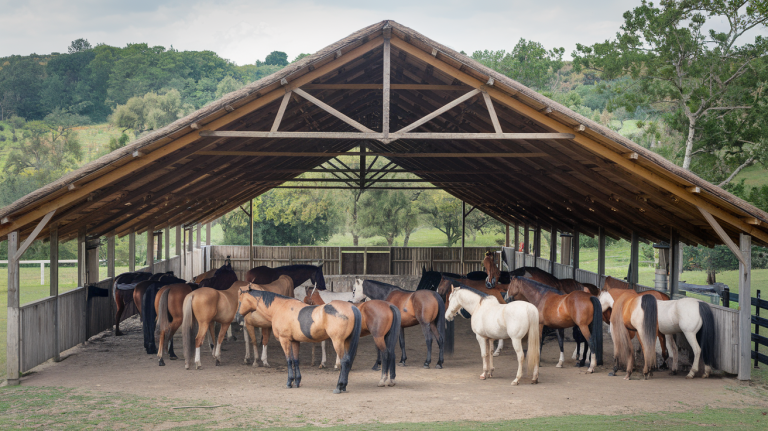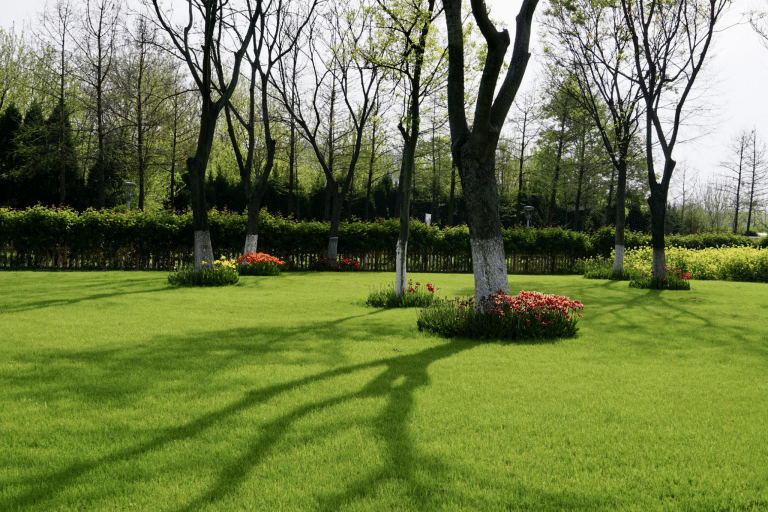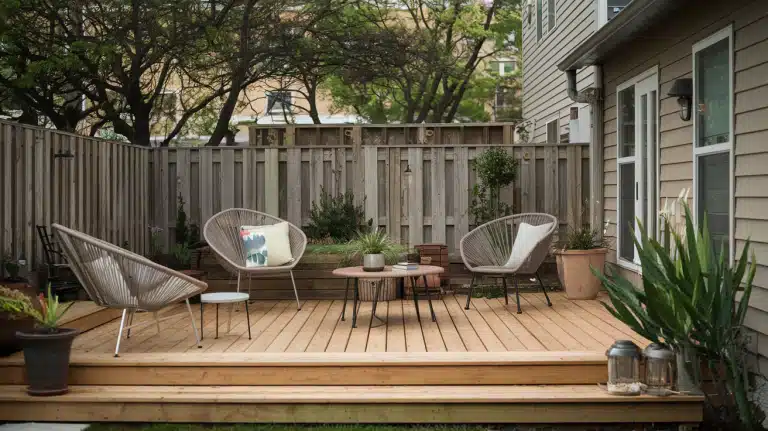Stunning Patios and Decks: 11 Design Ideas To Transform Your Backyard
You don’t need an elaborate renovation to get more from your outdoor space. Small upgrades can make a big difference, especially when they’re tailored to how you like to relax, entertain, or simply catch a break from being indoors. These patio and deck design ideas focus on practical improvements that offer comfort, function, and long-term value without being overly fussy or complicated.
1. Mix Patio Roofing Styles for Better Coverage and Comfort
The roof type affects shade, airflow, and how the space underneath is used. Combining patios and pergolas with flat or gable roofs creates flexibility in how much light or airflow you want. A covered area can act as a shielded dining spot, while an open-beamed section keeps it breezy. DIY patio roof kits make this kind of structure more accessible, especially if you’re working with a tighter budget and want a design that’s easy to manage.
2. Build Out a Wooden Deck for Warmth and Structure
Wood decks have a classic look that works with most house styles. They add warmth and can frame your backyard nicely, especially if you’re transitioning from a garden or lawn. Hardwoods like spotted gum or merbau are long-lasting options that hold up to foot traffic and exposure, though they’ll need regular sealing to retain their finish. A wooden deck also works well with built-in seating or steps, which can double as storage in smaller yards.
3. Go for Composite Decks if You Want Lower Upkeep
If sanding, oiling, and refinishing don’t appeal to you, composite decks are a smart alternative. They’re made from a mix of recycled materials and resins, which means they won’t splinter or warp like timber. Plus, they stay consistent in appearance and only need occasional cleaning. While the initial cost can be higher than timber, the minimal maintenance over time tends to even it out. They also handle cold weather well and don’t attract termites.
4. Use Privacy Screens to Zone Your Space
Privacy screens don’t have to look like dividers. Timber slats, laser-cut panels, or vertical gardens can create separation without completely closing the space off. Use them to carve out quiet corners or block less attractive views. They can also help contain wind if your yard tends to be exposed. For patios close to neighboring fences, screens can double as backdrops for lights, plants, or even hanging furniture.
5. Add Stone Patios for Texture and Toughness
Stone patios give your outdoor area a solid, grounded feel. They’re especially useful on uneven ground, where you can cut and fit the pavers to work with slight gradients. Bluestone, travertine, or sandstone are good options if you want durability and visual appeal. They also stay relatively cool underfoot, which makes them practical during summer. Use them near fire pits or open grills—they handle heat better than timber or composite decking.
6. Create a Wrap-Around Deck To Connect Zones
A wrap-around deck links multiple parts of your yard without breaking up the flow. It can loop around pools, corner gardens, or even part of the house. The design is helpful if you’re trying to unify different zones without adding more paving or lawn. You can play with levels too—raise one part for a dining zone and drop another for a sunken lounge area.
7. Add Ground Level Seating Zones for Flexibility
Not every deck or patio needs to be elevated. A ground level seating area with pavers or compacted gravel can be just as effective. Think of it as a landing pad for patio furniture or a fire pit setup. Add modular benches or movable chairs so you can change the layout easily depending on the season or number of guests.
8. Light It Right With Layers of Outdoor Lighting
Outdoor lighting improves visibility after dark, supports safety, and shapes the atmosphere of a space. Use a mix of task lights (for cooking or paths), ambient lighting (under-bench or strip lighting), and accents (up-lighting for plants or walls). Solar options have improved and can be useful for hard-to-wire corners. If you’re planning to host more in the evenings, lighting becomes part of your entertaining space rather than an afterthought.
9. Build a Rooftop Deck for Views and Ventilation
If you live in an urban area or have a flat roof that’s not doing much, turning it into a rooftop deck gives you a private spot above the bustle. It also takes advantage of airflow and light, especially in built-up neighborhoods. Just make sure your structure can handle the load. Lightweight furniture, potted plants, and artificial turf can make the space functional without adding too much weight.
10. Use Multi-Materials for a More Functional Layout
Combining decking materials—like composite boards with stone pavers—can make your layout more purposeful. Use the hardier surfaces where you cook or place furniture and the warmer materials where you lounge or walk barefoot. This approach helps break up the space visually without relying on barriers or walls. It’s also a good way to work around drainage or slope issues.
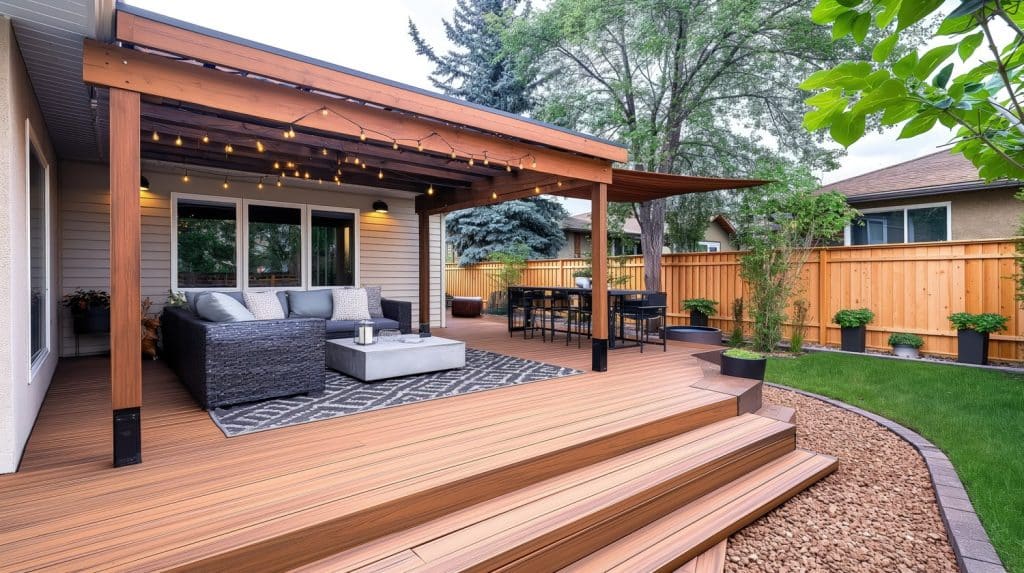
11. Keep Finishing Touches Minimal but Meaningful
Finishing touches matter, but they don’t have to be expensive. A few well-placed pots, a secondhand bench, or a fabric canopy can change the feel of the space. Stick to a palette that reflects what’s already around you—your fencing, your house’s trim, or the tones in your existing garden. Focus on texture and layout rather than color overload. You can always switch things up with accessories like cushions or lanterns later.
Conclusion
No backyard has to be perfect, but the right patios, decks, and smart design choices can turn any outdoor space into a place you actually want to spend time in. Focus on what matters first, then add pieces as your space evolves.

